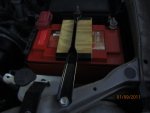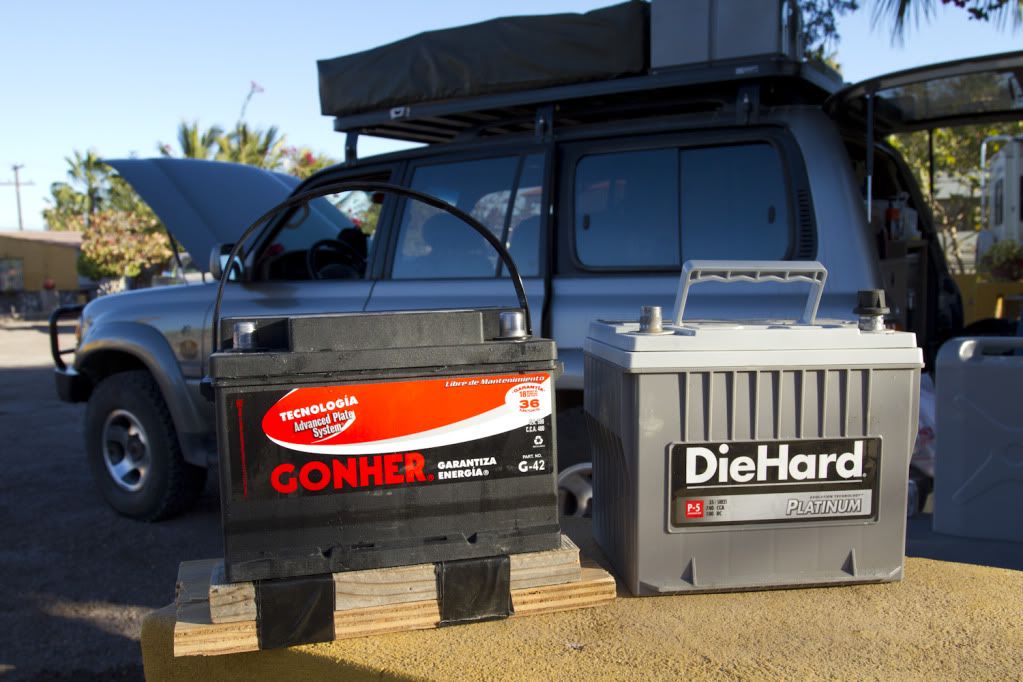jeffjeeptj
Adventurer
Here is a pic of an Odyssey 1700 in my 2003 Sequoia. Minor adjustment of ground cable, and plastic bottom battery holder , IIRC. It was installed in Dec 2005, and has not been cleaned since, neither battery case/area nor terminals. Disregard the custom hold down spacer, that's been in place since Dec 2005, too.
The OEM battery would grow corrosion very quickly, even within the first 6 months of Sequoia ownership, attacking the hold down clamp, and more importantly the underside of the hood (bonnet).
I have seriously drained the Odyssey twice since new. Most recent was in May 2010. Left headlights on for 30 hours. The Sequoia will sometimes sit for 7 - 10 days, even now, with no starting troubles. It does not get a lot of expedition use.
I have a single PC1500, in my Jeep LJ, that I bought in 2007. It sees a winch load, lights on, and small trailer towing/charging. The trailer has a PC2250 and gets a lot of deep cycling (long duration:light/medium load). 2250 is inside trailer box, no corrosion/acid leaks/smell.
I'm really satisfied with Odyssey. I appear to be the poster with the longest duration of ownership, but not Platinum.
HTH
The OEM battery would grow corrosion very quickly, even within the first 6 months of Sequoia ownership, attacking the hold down clamp, and more importantly the underside of the hood (bonnet).
I have seriously drained the Odyssey twice since new. Most recent was in May 2010. Left headlights on for 30 hours. The Sequoia will sometimes sit for 7 - 10 days, even now, with no starting troubles. It does not get a lot of expedition use.
I have a single PC1500, in my Jeep LJ, that I bought in 2007. It sees a winch load, lights on, and small trailer towing/charging. The trailer has a PC2250 and gets a lot of deep cycling (long duration:light/medium load). 2250 is inside trailer box, no corrosion/acid leaks/smell.
I'm really satisfied with Odyssey. I appear to be the poster with the longest duration of ownership, but not Platinum.
HTH
Attachments
Last edited:


